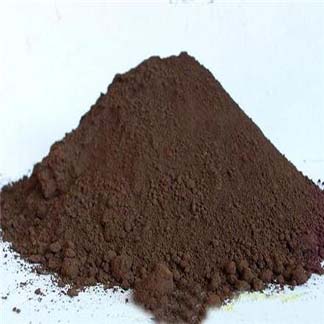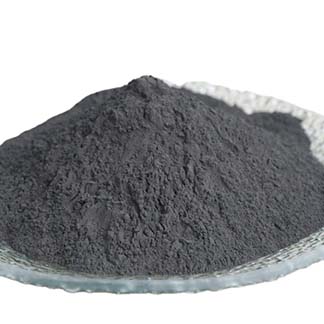Products
Zinc Products

Electric arc furnace (EAF) dust is a waste generated in the EAF during the steel production process. Among different wastes, EAF dust contains most amount of heavy metals such as Zn, Fe, Cr, Cd and Pb which can be used as raw material for different products.

The salts of zinc are common catalysts when used for their activity in a variety of organic reactions. The Zn(++) has an affinity for organic functional groups with lone pair electrons or pi bonds, and zinc salts are used as Lewis Acids to facilitate addition reactions of all sorts.

Zinc concentrate is zinc ore before refining. Zinc is contained mostly in sulfides and therefore the density of sulfur is high. At this step, how much Zn there is in the ore is important.
Zinc is used for the galvanising process, to protect steel in construction, transportation and products. It is also used as an alloying element with copper. Zinc is produced from ore mining, mineral processing, concentration, roasting, leaching, purification and electrolysis.

Zinc bottom dross is a by-product generated during the hot-dip galvanising of steel. The liquid zinc reacts with the steel, thereby generating zinc bottom dross and zinc ashes (zinc skimmings)
Zinc Dross is chiefly used to produce ingots which are utilised by galvanizer in local companies owing to its innate properties. The other major use of the Zinc Dross is the manufacturing of zinc oxide, which is mainly used in the rubber and tyre industry.

Zinc dust usually containing zinc oxide in varying amounts that collects as a bluish gray powder during distillation of zinc and that is used chiefly as a reducing agent, as a pigment in corrosion-resistant coatings for iron and steel, and in sherardizing.
Zinc dust is used to manufacture paints and coatings that resist corrosion when applied to structures or surfaces that are prone to harsh environmental conditions

Zinc ingot is a white or gray color pure zinc metal, which is cast into a block or bar that is suitable for further processing of metal. The zinc ingot is produced using solid-state, crystallization, and ultra high purification processes including sublimation.
The zinc ingots have hardwearing material strength and offers resistance to rust. It finds application in the hot-dip galvanizing steel, electrolytic galvanizing, photoengraving plates, zinc oxide, zinc plate, sacrificial anodes, and zinc ball.

The zinc oxide ores usually contain several different minerals including zincite (ZnO), smithsonite (ZnCO3), hydrozincite (2ZnCO3·3Zn(OH)), hemimorphite (Zn4Si2O7(OH)2·H2O), and willemite (Zn2SiO4). Producing a concentrate from zinc oxide ores can be performed using flotation or gravity methods.

Zinc sulfate is produced by treating virtually any zinc-containing material (metal, minerals, oxides) with sulfuric acid. Specific reactions include the reaction of the metal with aqueous sulfuric acid: Zn + H 2SO 4 + 7 H 2O → ZnSO 4·7H2O + H.

Zinc Sludge is waste during the purification process of zinc metal, it can be used in the production of different fertilizers and paints.
It is used in the formation of chlorophyll and some carbohydrates and is used in the conversion of starches to sugars. Zinc also helps plant tissue withstand cold temperatures. Zinc is essential in the formation of auxins, which help with growth regulation and stem elongation

Zinc tailings are a by-product of mining. After ore containing an economically-recoverable commodity is mined from the earth, that commodity is extracted in a processing plant or mill. After the commodity of value is extracted from the ore material, the resultant waste stream is termed “tailings
The present research explores the possibility of its application in road construction and filling.

Zinc oxide is an inorganic compound with the formula ZnO.
It is a white powder that is insoluble in water. ZnO is used as an additive in numerous materials and products including cosmetics, food supplements, rubbers, plastics, ceramics, glass, cement, lubricants, paints, ointments, adhesives, sealants, pigments, foods, batteries, ferrites, fire retardants, and first-aid tapes.
Although it occurs naturally as the mineral zincite, most zinc oxide is produced synthetically.

Waelz oxide is a zinc and lead concentrate pyrometallurgically derived from electric arc furnace dust.
Waelz oxide, the product, is delivered to metal smelters for zinc production and the byproduct, Waelz slag, can be used in road construction.

Most of the Zinc scrap is derived from the engines of cars. It can be recycled to make zinc oxide or zinc ingots. It can also be used to make new car engines.

Zinc sulfate is a drug used to replenish low levels of zinc or prevent zinc deficiency, or to test for zinc deficiency. Zinc sulfate is the inorganic compound with the formula ZnSO4 and historically known as “white vitrio
